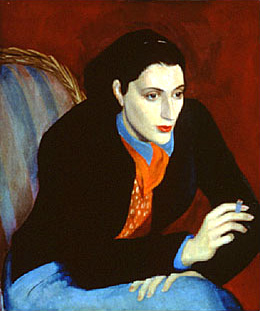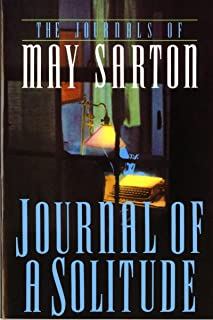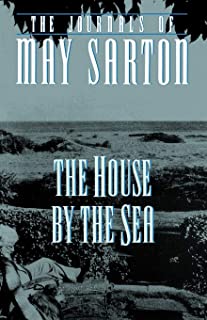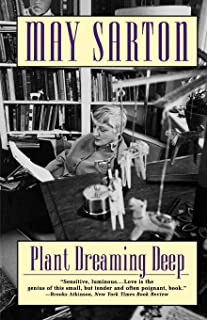- Read
- On The Writer
- On The Writing
- Favorite Quotes
- Photos
- Film and Audio
- Bibliography
- News
- Order Books
Reading Group Guide: Journal of a Solitude
Discussion Questions | Praise for May Sarton's Works | Journals by May SartonDiscussion Questions
1. The deliberate decision to live alone was a brave one for a woman of Sarton's generation. "I am here alone for the first time in weeks, to take up my 'real' life again at last. That is what is strange-that friends, even passionate love, are not my real life unless there is time alone in which to explore and to discover what is happening or what has happened. Without the interruptions, nourishing and maddening, this life would become arid. Yet I taste it fully only when I am alone here and 'the house and I resume old conversations' '' (Journal of a Solitude, p. 11). Discuss the role solitude plays in Sarton's journals. What price does she pay for living alone? How does she deal with her loneliness? What does she see as the rewards of the solitude she has chosen?
2. "There is no doubt that solitude is a challenge and to maintain balance within it a precarious business. But I must not forget that, for me, being with people or even with one beloved person for any length of time without solitude is even worse. I lose my center. I feel dispersed, scattered, in pieces. I must have time alone in which to mull over any encounter and to extract its juice, its essence, to understand what has really happened to me as a consequence of it" (Journal of a Solitude, p. 195). It is ironic that Sarton's "solitary" life is in fact filled with visitors and commitments that take time away from her art. What is your reaction to the many complaints she makes about these interruptions?
3. "Plant Dreaming Deep has brought me many friends of the work. . . . But I have begun to realize that, without my own intention, that book gives a false view. The anguish of my life here-its rages-is hardly mentioned. Now I hope to break through into the rough rocky depths, to the matrix itself. There is violence there and anger never resolved" (Journal of a Solitude, p. 13). Contrast the picture of the emotional life revealed in these two journals. To what extent does Journal of a Solitude achieve her stated goal?
4. "Now I am reading over the journal and revising I see that I have made a good journey out of depression and rage, and it is time soon to make an end of this means of handling those demons. It has served its purpose" (Recovering, p. 239). "I feel happy to be keeping a journal again. I have missed it, missed 'naming things' as they appear, missed the half hour when I push all duties aside and savor the experience of being alive in this beautiful place" (At Seventy, p. 17). How do you think keeping a journal helped Sarton to live with the inevitable results of the choices she made?
5. Sarton often attributes her depression to the fact that the literary critical establishment for so long either ignored or disparaged her work. All her books have remained in print, however, and her journals especially touched the lives of many thousands of readers. How would you assess her strengths and weaknesses as a writer?
6. What do you think is the essential appeal of Sarton's journals? How does she achieve their effects? In Encore, she tells her readers, "I suddenly realized what it is about my journals that may be valuable. I never tell people what to do. I cannot imagine making a step-by-step analysis of how to live in solitude. I describe a way of life" (p. 214). Is she right in this perception?
7. "What kept me going was, I think, that writing for me is a way of understanding what is happening to me, of thinking hard things out. I have never written a book that was not born out of a question I needed to answer for myself. Perhaps it is the need to remake order out of chaos over and over again. For art is order, but it is made out of the chaos of life" (At Seventy, p. 105). Do you agree with Sarton's definition of art? What order is she attempting to create in her own writing?
8. Unlike many journals, Sarton's are clearly written to be read by the public. What are some differences between public and private journals? Has Sarton's unusual honesty for a woman of her generation to some extent overcome the public/private distinction?
9. Looking at Sarton's work, what is the difference between a journal and a memoir?
10. In The House by the Sea, Sarton writes, "If there is an art to the keeping of a journal intended for publication yet at the same time a very personal record, it may be in what E[lizabeth] Bowen said: 'One must regard oneself impersonally as an instrument' " (p. 5). What do you think of Bowen's statement? To what degree does Sarton achieve objectivity or impersonality in her journals?
11. Sarton attends to the smallest pleasures of life, whether setting a beautiful table or arranging the flowers she grows in her garden. What effect does the recording of these details have on the reader?
12. Discuss how the fact that Sarton was a poet influences the style of her journal and memoir writing. For instance, how does she use metaphors and images to convey her daily physical, intellectual, and emotional experience?
13. What does Sarton mean by saying, "We are all myth-makers about ourselves" (Plant Dreaming Deep, p. 183)? How would you define a myth? What myths does Sarton create? How do you respond to them?
14. "I read [C. M. Bowra's essay on Sappho] forty-six years ago, and it had the good effect of helping me come to terms with the fact that women alone inspired me to write poems. It was troubling, but the seizure, when it came, was so commanding I could not doubt its value. I could not believe I was wrong or aberrant. It gave me courage to be myself and not to allow the ethos of the time to blur my vision." (At Seventy, p. 91). In Journal of a Solitude, Sarton refers to her lovers only by initials. Does this deception work? Does knowing that Sarton is a lesbian affect our understanding of her story?
15. Sarton said that women have always been the necessary muse for her poetry. What does the word "muse" mean to you? What do you think Sarton is saying about her muse?
16. The desire for romantic love plays a large part in Sarton's emotional landscape. "I have longed for one person with whom everything could be shared, but I am slowly making my peace with the knowledge that this will never happen" (Journal of a Solitude, p. 157). How realistic is this wish? What impression do you get of Sarton's relationships with her friends and lovers?
17. "Having an English mother and a Belgian father, I have been for forty years a builder of bridges-a builder of bridges between one kind of life and another, between Europe and America for example" (Endgame, p. 227). How has Sarton's European background influenced her? Compare the portraits of her family and her early life in I Knew a Phoenix and A World of Light with those she writes in her later journals. How does her view of her parents change as she gets older?
18. What is the function of gardening in Sarton's life? How does she balance her days between the demands of her writing and the demands of the physical world she is constantly creating and re-creating around her? In the later journals, how does the gradual decay of the garden function as a metaphor?
19. Animals are essential to Sarton's well-being. What is the particular love, devotion, and dependence that Tamas, Bramble, Pierrot, and the birds in the garden offer her?
20. What role does music play in Sarton's life? During what moods was it most important? Why was she at times unable to listen to the music she loved so much?
21. Late in her life, Sarton was, as one might expect, absorbed by death, dying, and illness. Her journals detail her daily battle with pain and increasing debility. What is your response to her candor in discussing these topics?
Praise for May Sarton's Work
"May Sarton is at once a foremother of all us women now writing and a peer because she is still producing and evolving. She is still teaching us how to think about the events of our lives, and how to sing about them, too. It has been one of her gifts never to pretend that a woman's life is easier or simpler than it is, but to record its austerity and richness." — Marge Piercy
"Prolific poet and novelist, author of six nonfiction books and heaped with academic honors, Sarton has fashioned her journals, 'sonatas' as she calls them, into a distinctive literary form: relaxed yet shapely, a silky weave of reflection, sensuous observation and record of her daily round, with the reader made companion to her inmost thoughts. . . . Rich in warmth, perceptiveness, and reassurance." — Publishers Weekly
Journals by May Sarton
I Knew a Phoenix
Plant Dreaming Deep
Journal of a Solitude
A World of Light
The House by the Sea
Recovering
At Seventy
After the Stroke
Endgame
Encore
At 82
Source: https://www.wwnorton.com/rgguides/journalrgg.htm





